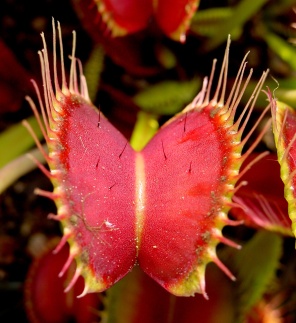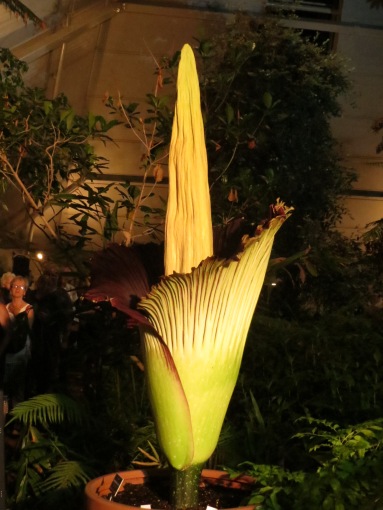What is intelligence? Intelligence can be defined as the ability to perceive changes in one’s environment, to apply knowledge to manipulate their environment to suit oneself, and to think abstractly. If I were to ask if you thought plants were intelligent, most likely your response would be “most certainly not, they’re not animals”, or something along those lines. And in one sense you would be right, they are not animals. Gotcha. But…it is of course much easier for scientists to prove that animals can be intelligent, because they have obvious structures that we associate with intelligence, such as a brain, and a nervous system. However, when considering plants, the criteria for intelligence are less clear. So this raises two questions – are plants intelligent, and if not intelligence, what has allowed plants to adapt, survive and flourish in their various environments.
The question of plant intelligence raises the issue of whether plants are capable of feeling and adapting to their environment and manipulating it, which has led to the idea of plant neurobiology. This concept of plant neurobiology allows us to understand how plants perceive their environment and how they respond to those stimuli. This could give us ideas for the future on how to develop better ways to grow crops. One particular person who is well-known for his views and work on the concept of plant neurobiology and plant intelligence is Professor Anthony Trewavas. He proposed that plants must be intelligent, because of their ability to perceive their environment and manipulate it. He described plant intelligence as the interactions between the plant tissues of an individual plant, which appear to give evidence for a nervous system.
In recent years, there has been an increasing amount of evidence to suggest that plants do possess a type of nervous system. One example demonstrating this is Arabadopsis thaliana, model plant species in plant biology and genetics. Scientists have performed experiments that showed the reaction of the whole plant (under fluorescence imaging) to light being shone onto a single leaf of the plant. They noticed that the plant responded to the light by carrying out light-induced chemical reactions (photosynthesis continued in the dark). These findings suggested that the leaf sent electro-chemical signals to other leaves, causing them to start photosynthesising too, which can be compared to the nervous system in animals. Another experiment subjected Sterllaria seeds to dark or light conditions for more than a year, and the seeds showed some memory of the conditions they had experienced. Some argue that plants do have a brain and it could be located in the meristem near to where the signal has been given. Evidence for this can be found in the local meristem itself, where decisions are made – whether a plant will move its roots towards the nutrients or water, or whether it will moves its leaves towards the sun.
Plants have the ability to perceive changes of abiotic or biotic factors within an environment; therefore, they react in a certain way to counteract that change. Plants, like carnivorous plants, are capable of perceiving changes in their environment, through the use of sensory organs, which allow them to respond to environmental stimuli, such as light, gravity, and water. The plant’s response to a stimulus is called a tropism. Behaviour of carnivorous plants supports plant intelligence further. Dionaea muscipula (Venus flytrap) has modified leaves which trap insects for the plant to digest. Inside the leaves, 6 tiny hairs act as triggers, and when they are touched, this triggers the trap to close, due to deformation of hair sensory cells. It is argued that D. muscipula must have some form of nervous system in order for this reaction to occur.

Venus flytrap (Photo credit)
Plants also have the ability to manipulate their environment. One way that they do this, is through changing soil pH. For example, in some areas where the soil is very low in nutrients, (particularly iron, which is necessary for plants to grow healthily), some plants excrete protons into the soil, which causes the pH of the soil to decrease. This increases the solubility of the iron molecules so the plants are able to take up the iron from the soil more easily.
However, you could easily argue that plants do not possess intelligence. The most obvious argument is that plants do not have a brain, so they cannot think or reason. Yes, plants are capable of detecting changes within their environment, but they simply respond to these changes naturally without making a conscious decision. Their responses are innate, built into their molecular structure. For example, if a plant is placed near a window, the leaves will turn to face the sun (positive phototropism). The plant shoots move towards the light, due to the secretion of the plant hormone auxin. The light causes auxins to be secreted at the dark side of the plant, causing the elongation of the plant cells on the dark side of the plant. This is simply a hormonal response, as the plant is simply reacting to the light stimulus. The theory of evolution will say that this shows that the plant has ‘learnt’ through the process of evolution that it needs to move to the light to survive. Tropisms allow plants to maximise their chances of survival. Plants with more favourable responses to stimuli can pass on their genes to future generations, thereby increasing the survival of their species. In place of a nervous system, plants use chemicals to convey messages. For example, the sagebrush secretes chemical signals, which warn surrounding sagebrush plants that there are pests nearby. This triggers the surrounding plants to produce leaves that are more resilient to pest attack. The ‘decision’ for the plant to produce these chemical signals is made at the cellular level of the plant. What’s more important, the plant would still produce the signal without other sagebrush plants around. This suggests that plants are pre-programmed to react this way, and that they are not aware of their surroundings.
Another argument against plant intelligence is plants’ lack of a true nervous system. Some plants do have sensory hairs, like Mimosa pudica, which has tiny hair-like projections on its leaves. Once these hairs are touched, this triggers the leaves to close up, acting as a defense mechanism. This is as a result of rapid long-distance signalling . The plant appears dead, so it is preventing its predator from eating it. This increases its chances of survival and maintaining genetic diversity.

Mimosa pudica (Photo credit)
If a systematic approach is used, you could say that plants can’t be classified as intelligent. Although they do have systems which allow them to conduct chemical signals across from one part of the plant to another, they do not have a proper nervous system with a brain. As a result, they cannot think, or reason. Plants show that they are unable to choose where their seeds land and germinate – it is random. However, just because plants may not be considered intelligent in the way humans are, does not mean that they are not productive – they still need to regulate their metabolic and developmental processes in order to maintain function. However, this regulation does not mean that a plant has thought about any of the processes it is involved in. Plants have a built-in ability to adapt to changes in their environment. Some plants have shown to be resilient against drought, extreme soil salt concentration, flooding, and fire. Their ability to survive maximises their chances for successful reproduction, therefore allowing their genes to be passed onto future generations.
The scientific community (and perhaps my readers) remain divided as to whether plants can be considered intelligent, and this is likely to remain the case. However, the concepts of plant intelligence and neurobiology could raise awareness of what plants are capable of, when placed into challenging situations; and this can allow us to find ways of utilising plants’ amazing features which make them the most successful species on the planet.
So the verdict is…I’ll leave that to you to decide.
#plantsgotskills
















